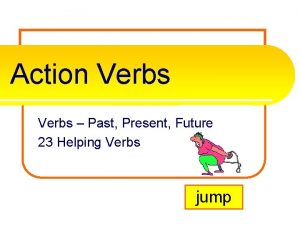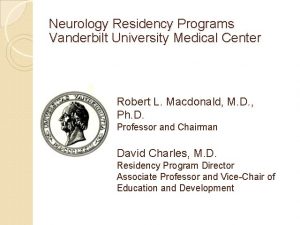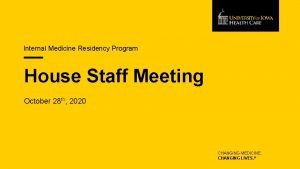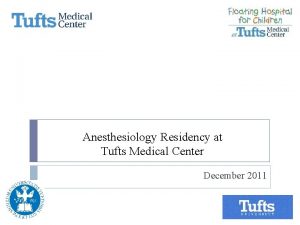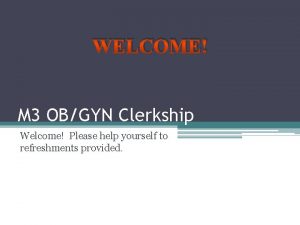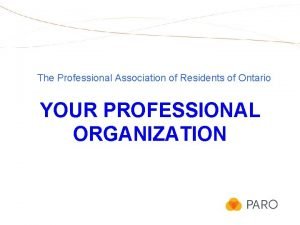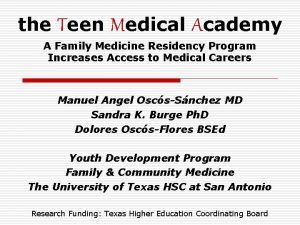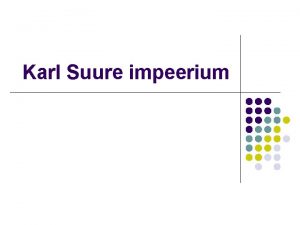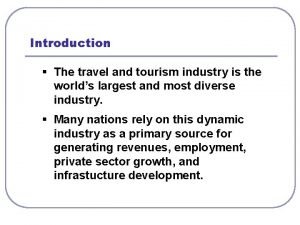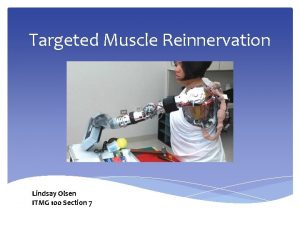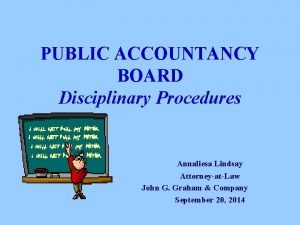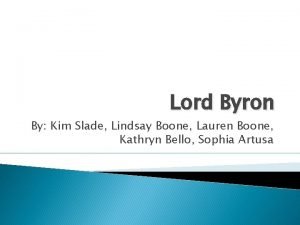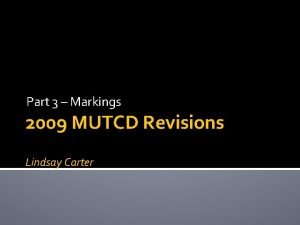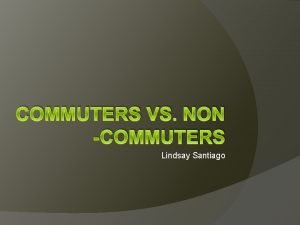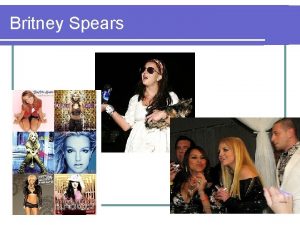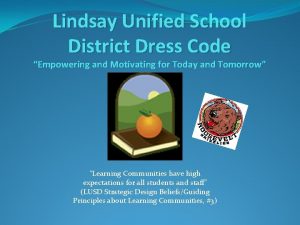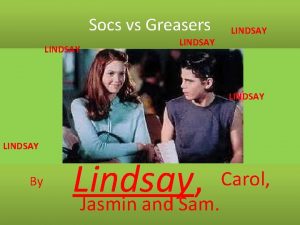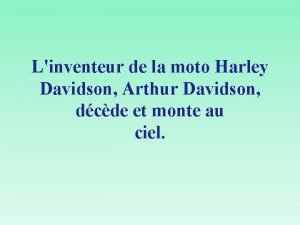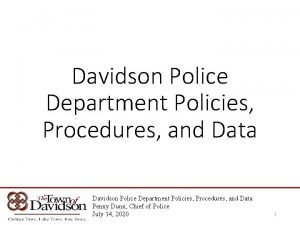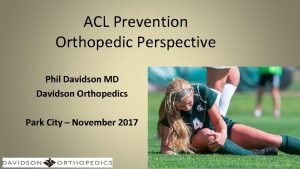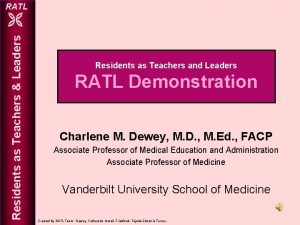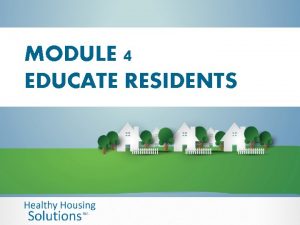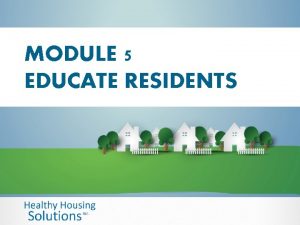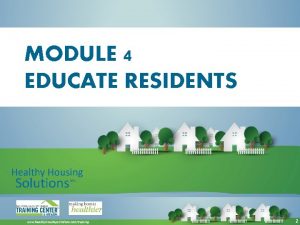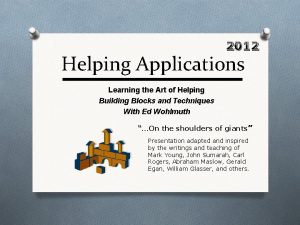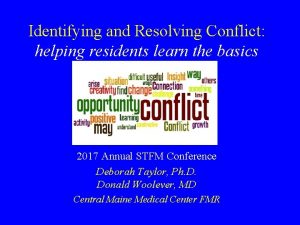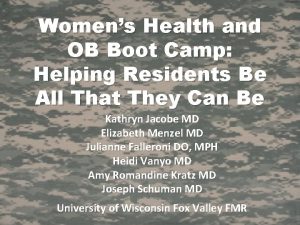Helping Residents Create Digital Learning Resources Lindsay Davidson







































- Slides: 39

Helping Residents Create Digital Learning Resources Lindsay Davidson, Sheila Pinchin, Lynel Jackson, Allison Tucker Queen’s University, Kingston ON ICRE 2014

Overview Upon completion of this session, participants will be able to: 1. Select an e. Learning platform 2. Describe how resident development of e. Learning could be integrated into postgraduate training programs 3. Develop a rubric for the evaluation of e. Learning modules

Agenda 8: 00 -8: 15 -8: 35 -9: 00 -9: 15 -9: 30 -10: 00 -10: 30 -10: 45 -11: 00 -11: 15 -11: 30 Introductions A resident’s experience and demo Project planning Technological tools Best practices in design/development Create a plan for a resident-driven project Break with poster walk Debrief project plans/brainstorm rubric ideas Collaborative creations of rubrics Sharing/discussion of rubrics Questions/wrap-up

You Who you are Why this topic interests you What you hope to get out of the workshop

Us Who we are What we’ve done Why we wanted to share

A resident’s perspective A. Tucker, MD October 23 rd, 2014 TORONTO, ON

Why pursue a Masters degree in residency?

http: //windsorindependent. com/scumbags-5 -step-guide-unemployment/

Why MSc. In Anatomical Science?

Interested! Applicable! http: //www. nicoleunderwood. com. au/2012/05/28/how-to-reduce-staff-turnover-with-a-flexible-culture/


https: //www. linkedin. com/today/post/article/20140524105106 -95933 -i-have-great-ideas-but-my-boss-is-not-receptive

• Needs assessment • Topic selection • Determine audience • Module development • Challenges • Evaluation


Can. Meds 2015

Project planning 1. 2. 3. 4. Establish needs of resident as well as those of target learner Negotiate initial project idea and desired purpose Consider content over technology Identify key steps in process – set milestones with dates 1. Identify needs 2. Set objectives 3. Develop content 4. Add other elements: formative assessment; further resources… 5. Provide guidance as to where/how to start 1. How best to understand existing curricular resources? 2. Key stakeholders (students, teachers) 3. Available (human) resources: librarian, educational developer, web developer, Med. Ed. Portal… 6. Iterative process with feedback (supervisor, test audiences)

Technological Tools for module development v e. Xe. Learning, Blendspace (freeware) v Simple Web Editor (MEd. Tech, Moodle, Google sites) v Articulate Storyline ($800 w/ academic discount) v Curation Tools (Wordpress, Scoop. It, Padlet, Storify)

Some Examples Learning

Examples of web editor tools

Articulate Storyline

Word. Press Blog by Queen’s medical student Eve Purdy created using Word. Press FOAM advocate and blogger http: //manuetcorde. org/2013/04/14/neurology-resources-for-medical-students/

Best practices in design • Start with your outcome for the learners – What you want the product to look like, and do? • How will you (and learners) know that the outcome has been achieved? • Develop the learning experiences to achieve the outcome – Backwards design from Wiggins and Mc. Tighe (2008)

Criteria to consider in design/development The module itself: v Content (what, organization, amount, evidence, level) v Design (knowledge and skills, learning objectives match, chunking material, topics, subtopics) v Interactivity (types, relevance and utility for learning) v Usability (navigation, “look and feel”, layout)

Generic module framework Title Purpose: scope of the module; how/why to use Objectives: What students will learn Foundational knowledge Glossary / Knowledge check Approach Units of knowledge (organizer) Relates to objectives / Embedded formative assessment / Case examples Test your understanding (ideally with feedback) Links/references/resources Credits (copyright, date of last update, peer review, image credits, contact) Printable/pdf version

Criteria to consider in design/development People who can help: v Subject–matter Experts v Educational Developer v Instructional Designer v Informatics Librarian v Students/target users

Criteria to consider in design/development Review and evaluation: v v Multiple / “arms-length” reviewers Evaluation by users Peer review Iterative process

Create a resident-led project v Imagine how one of your residents could lead a project to develop an educational resource v Working initially individually complete the worksheet provided v Once you have gotten an idea, we will break into small groups (2 -3) to discuss and further shape your ideas v Pick one “project” and outline the key elements on the poster sized sheet provided

Break / Poster Walk/ * Post a note: Do you have any advice or comments about the project?

Debrief projects v Are the projects feasible? useful? v What common themes did you notice? v Did any of the facilitators/obstacles resonate with you? surprise you? v Do you have any advice or questions for the ‘design teams’? v Anything else?

How do you know if you hit the target?

Assessment and evaluation rubrics v Relate to learning objectives around a task v Delineate consistent criteria for grading v Used for scoring on a standard of performance v Provide a range: – anchors on either end of performance characteristics – descriptors of additional developmental levels of performance

Components of a rubric v Dimensions to be evaluated (criteria) v Rating scale (levels) v Definitions of performance (descriptors)

Characteristics of a good rubric v v Easily comprehensible Objective, fair, reasonable Transparent to the learner Defensible if questioned

Create a rubric to evaluate e. Learning project Consider: 1. Key criteria applicable to e. Learning project you envision 2. How many levels are useful to describe? (3 or 4, perhaps) 3. What will an excellent e. Learning project look like? allow learners to do?

Sharing

Rubric for evaluation of online modules Use or modify a rubric such as http: //www. ncbi. nlm. nih. g ov/pmc/articles/PMC 3878 933/ Foster, Margaret J. et al Evaluation of best practices in the design of online evidence-based practice instructional modules J Med Libr Assoc. Jan 2014; 102(1): 31– 40.

Pitfalls v v v Not understanding needs of learner Not understanding context/limitations for resident-developer Scope creep Getting hooked on technology over design/purpose Not engaging undergraduate teachers who might use/champion the use of your intended product v Lack of arms-length reviewers v Lack of oversight/feedback/iterative development

Questions?

Contact Us lindsay. davidson@queensu. ca sheila. pinchin@queensu. ca lynel. jackson@queensu. ca
 Helping verbs past present future
Helping verbs past present future Apa itu mutiple queue dan one way list
Apa itu mutiple queue dan one way list Learning target
Learning target Michael levitt uw
Michael levitt uw Umass pharmacy residency
Umass pharmacy residency Wake forest neurology residency
Wake forest neurology residency Dr paige berryman
Dr paige berryman Uihc internal medicine residency
Uihc internal medicine residency Tufts medical center anesthesiology residency
Tufts medical center anesthesiology residency Unmc obgyn residents
Unmc obgyn residents Dr julia creider
Dr julia creider Informed delivery campaign
Informed delivery campaign Unm im residency
Unm im residency Uthscsa family medicine residency
Uthscsa family medicine residency Karl suure pealinn
Karl suure pealinn Outbound inbound tourism
Outbound inbound tourism Nutrition and hydration chapter 15
Nutrition and hydration chapter 15 Personal care skills chapter 6
Personal care skills chapter 6 Famous people from yonkers
Famous people from yonkers Slu family medicine residency
Slu family medicine residency Uf neurology residency
Uf neurology residency Cuadro comparativo entre e-learning b-learning y m-learning
Cuadro comparativo entre e-learning b-learning y m-learning What is transformation process
What is transformation process Example of fixed resources
Example of fixed resources Renewable resources vs nonrenewable resources
Renewable resources vs nonrenewable resources Waste collection lindsay
Waste collection lindsay Lindsay olsen singer
Lindsay olsen singer Annaliesa lindsay
Annaliesa lindsay Lindsay bassman
Lindsay bassman Jim lindsay ipswich
Jim lindsay ipswich Slade lindsay
Slade lindsay Lindsay kiely
Lindsay kiely Spanish skit scripts
Spanish skit scripts Lindsay andras md
Lindsay andras md Lindsay carter
Lindsay carter Lindsay santiago
Lindsay santiago Snoop and britney
Snoop and britney Syndrome lindsay hemenway
Syndrome lindsay hemenway Poway high school dress code
Poway high school dress code Lindsay semler
Lindsay semler
